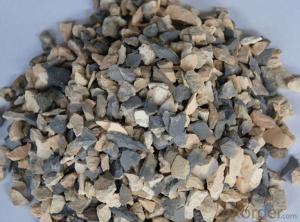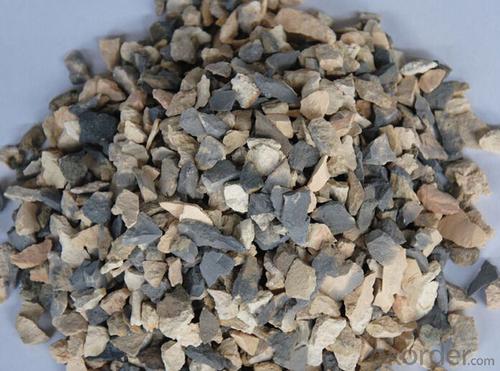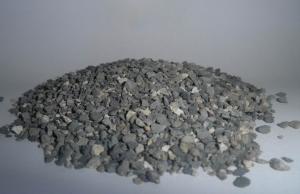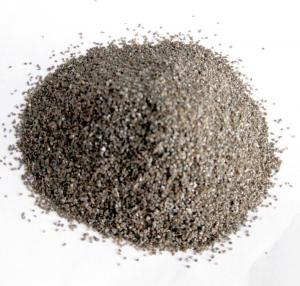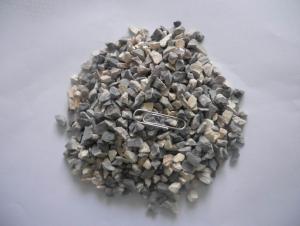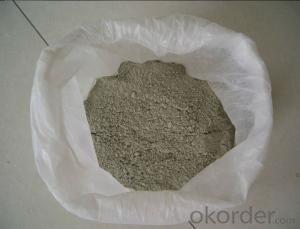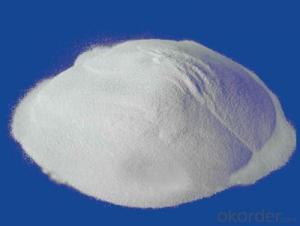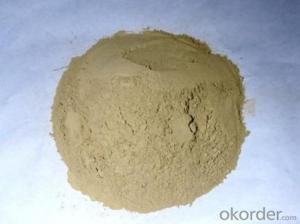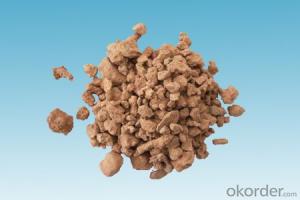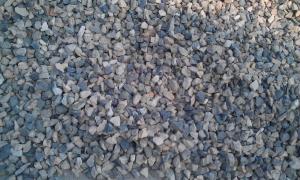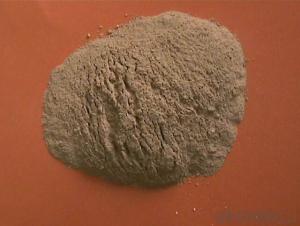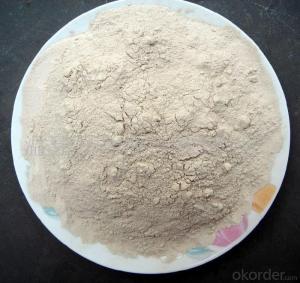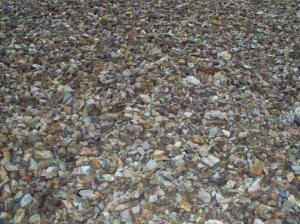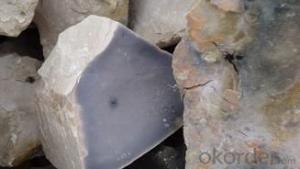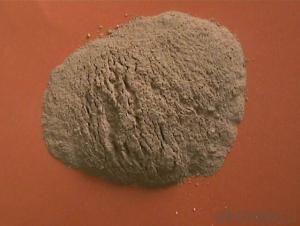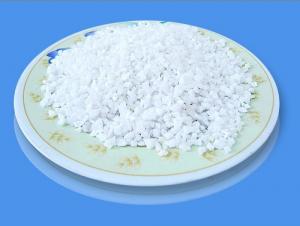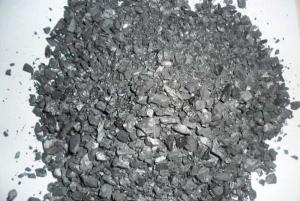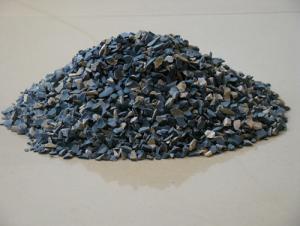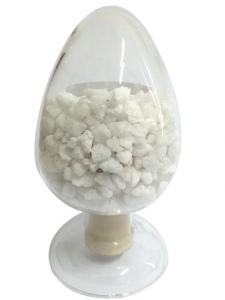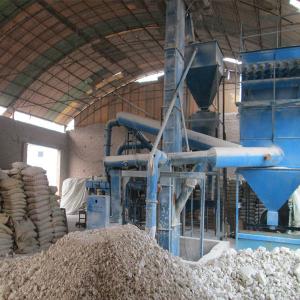Calcind Bauxite Raw Materials for Refractory - Aluminum Making Originated in China for Turkey
- Loading Port:
- Tianjin
- Payment Terms:
- TT or LC
- Min Order Qty:
- 20000 m.t.
- Supply Capability:
- 10000000 m.t./month
OKorder Service Pledge
OKorder Financial Service
You Might Also Like
1. Description of BaCalcind Bauxite Used for Aluminum Making Originated in China for Turkey
Bauxite (aluminous soil; Bauxite) is also called the alumina or bauxite; main ingredients are alumina, hydrated alumina containing impurities, is an earthy mineral. The color is white or gray, brown and yellow or light red by iron. From 4 to 3.9 g/cm3 density, hardness, 1 ~ 3 is not transparent, very brittle, very difficult to melt. Insoluble in water, soluble in sulfuric acid, sodium hydroxide solution. Mainly used for aluminium, refractory material.
2. Main Features of Calcind Bauxite Used for Aluminum Making Originated in China for Turkey
Calcined bauxite is one of the principal ore of aluminum. Calcined bauxite contains hydrous aluminum oxides and aluminum
hydroxides, formed through the laterization of aluminous rocks in tropical and subtropical areas .Calcined bauxite is obtained by calcining (heating)superior grade bauxite at high temperature (from 85OC to 1600C) .This removes moisture there. By increasing the alumina content,compared to an alumina content of about 57%to 58% in raw bauxite, calcined bauxite has an alumina content of 84%to88%.The heating is carried out in rotary kilns.
3. Calcined Bauxite Images
Calcind Bauxite Used for Aluminum Making Originated in China for Turkey
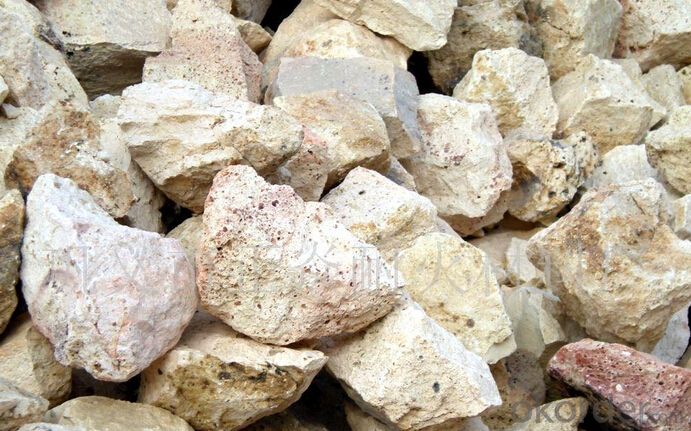
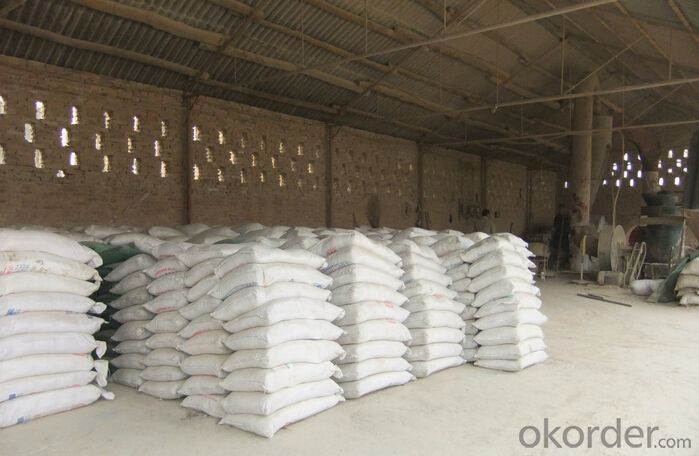
4. Calcined Bauxite Specification
Calcind Bauxite Used for Aluminum Making Originated in China for Turkey
Rotary Kiln Calcined Bauxite SEMI L.F Specification : Al2O3 : 83.00 + % Fe2O3 : 3.5 % SIO2 : 5 To 6% Cao : 2.5% TIO2 : 4 % , Size : 0-1MM OR 1-3MM
Rotary Kiln Calcined Bauxite G.G.NO.1 Specification : Al2O3 : 80.00 + % Fe2O3 : 3.8 % SIO2 : 6 To 8% Cao : 2.2 To 2.5% TIO2 : 5 To 6 % , 0-1MM OR 1-3MM
Rotary Kiln Calcined Bauxite G.G No.2 Specification : Al2O3 : 78 % Fe2O3 : 4 TO 4.2% SIO2 : 8 To 9 % TIO2 : 6.00 % Cao : 2.50 % , Size : 0-1MM OR 1-3MM
Rotary Kiln Calcined Bauxite G.G No.3 Specification : Al2O3 : 75 % Fe2O3 : 4 TO 4.5% SIO2 : 9 To 11 % TIO2 : 5.00 % Cao : 3.00 % Size : 0-1MM OR 1-3MM
Or as per buyes requirements.
5.Our service:
Calcind Bauxite Used for Aluminum Making Originated in China for Turkey
1.Reply your enquiry in 24 working hours,any time you can contact me.
2.OEM, buyer design, buyer label services provided.
3.Exclusive and unique solution can be provide to our customer by our well-trained and professional engineers and staffs.
4.we can provide free sample for your check
5.we have the certification of ISO 9001
6.Special discount and protection of sales area provided to our distributor.
7.timely delivery
8.packing can make client brand.
9.Good after-sale service
- Q: which kind of material is chosen for fireproofing window?
- (1) window frame uses steel frame or wooden frame with certain strength that can safeguard the integrity and stability of the components. (2) steel frame and mound layer can choose galvanized?steel?sheet or stainless steel plate. Its selection criteria conform to the article 5.1 in GB12955 Steel Fireproof Door General Technical Condition. (3) the selection criteria of wooden frame and mound layer should conform to the article 5.1 in GB12955 Wooden Fireproof Door General Technical Condition. (4) the inside filler material of steel, wood frame should use incombustible material. (5) fire-resistant glass can choose test approved products without affecting the fire resistance of fireproofing windows . Light transmittance of glass should not be less than 75% of same layers commom sheet glass. (6) the sealing material between the frame and the fire-resistant glass should use flame retardant materials, it can play a role of fireproofing and smoke insulation in the fire.
- Q: What is the difference in the nature between the refractory material and thermal?insulation?material
- thermal?insulation?material is used to thermal insulation and the transfer of heat insulation. refractory material is defined as greater than 1580 ° non-metallic materials, such as calcium silicate board. its using temperature can reach to 1100 degrees, and some can also be used at high temperatures, and all high-temperature industrial can't be oprated without it, and the using temperature of polycrystalline alumina fibers can reach to 1800 degrees
- Q: How many types do refractory bricks have? Where the quality of refractory material is best? What is the model?
- Sinosteel Luoyang (Luoyang Refractory Material Plant in the past): High alumina(mainly blast furnace), Gongyi. There are also a series of high-tech materials (silicon carbide, carborundum, etc.) a major producer of high alumina; silicious: Resistant material for steel, glass furnace, cement kiln); magnesia. Divide from uses and divide from chemical texture; silicious(glass furnace): Xinmi, Hennan Province, Lengshui River, coke oven, etc.). As for the models, Yixing and Changxing in Jiangsu Province: Haicheng, Liaoning Province; silicious, I do not understand your intentions; magnesia (nonferrous, steel refining; magnesia: High alumina brick; Dashiqiao area! Please put it in detail.
- Q: Refractory materials are needed for casting metallurgy.
- Refractory material used in foundry work is that refractories for cupola furnace? Cupola is a high temperature furnace which is used for melting molten iron, and refractory material adopted is mainly low iron high grade clay brick and clay lightweight insulation bricks, etc.foundry ingot refractory material is pearl sand (also known as pearl jewelry sand, fused ceramic, ceramic sand) it is made of high quality bauxite material by arc melting furnace.
- Q: Can I use ordinary cement with the addition of sand, clay, and salt as refractory material to paste the stove?
- You can add some animal hair, like bristles. After all, we don’t have so much hair. Remember not to use cement, because it will crack. Instead, make use of animal hair, lime, yellow mud and sand, after mixing up, and they would be firmer while in calcination.
- Q: What are the differences and connections between softening temperature of the refractory under a fixed load and thermal resistant creep property of the refractory?
- The result of refractoriness under load is temperature while the result of creep is percentage of deformation. Refractoriness under load and creep can be tested by an instrument. Refractoriness under load reflects the temperature in which the deformation reaches a certain degree under the condition of load. Creep reflects the deformation refractory has under the condition of constant temperature and load. Both refractoriness under load and creep are important criterion for the operating temperature of refractory.
- Q: Refractories for iron-making blast furnace?
- This question is too professional - as far as I know, there are blast furnace noumenon bricklaying - trough slag runner fire-resistant model ~ main channel carbon rod ~ ramming mixes ~ ~ I do not know the specific details.
- Q: What's the A class fireproof and thermal inuslation matertial for external wall?
- First, external wall thermal insulation material: 1. silicate insulation material; 2. glue powder polyphenyl granule; 3. cement cystosepiment with the use of steel wire gauze (polystyrere); 4. extruded sheet; Second, roofing materials: 1. xps extruded sheet; 2. EPS foam board; 3. perlite and perlite brick; 4. vermiculite and vermiculite brick; Third, materials for heating power and air conditioners: polyurethane, rubberplastic sponge, polyethylene, polystyrene foam, glass wool, rock wool; Fourth, steel structure material: polystyrene, extruded board, polyurethane board, glass cotton lap felt, etc.
- Q: what textures of furnace refractories are good?
- First, it depends on the kiln. If it is the cubic kiln, the top and the wall portion should use alumina hollow ball bricks. The bent seal and kiln car use heavy corundum bricks. If it is the consecutive kiln, the burning zone shall all use the alumina hollow ball bricks, and both the burning zone bent seal and the brick kiln car bent seal use the heavy corundum bricks. Ifit is the pit furnace, furnace walls and roof use the alumina hollow ball bricks, and the bottom of the furnace use heavy corundum bricks.
Send your message to us
Calcind Bauxite Raw Materials for Refractory - Aluminum Making Originated in China for Turkey
- Loading Port:
- Tianjin
- Payment Terms:
- TT or LC
- Min Order Qty:
- 20000 m.t.
- Supply Capability:
- 10000000 m.t./month
OKorder Service Pledge
OKorder Financial Service
Similar products
Hot products
Hot Searches
Related keywords
